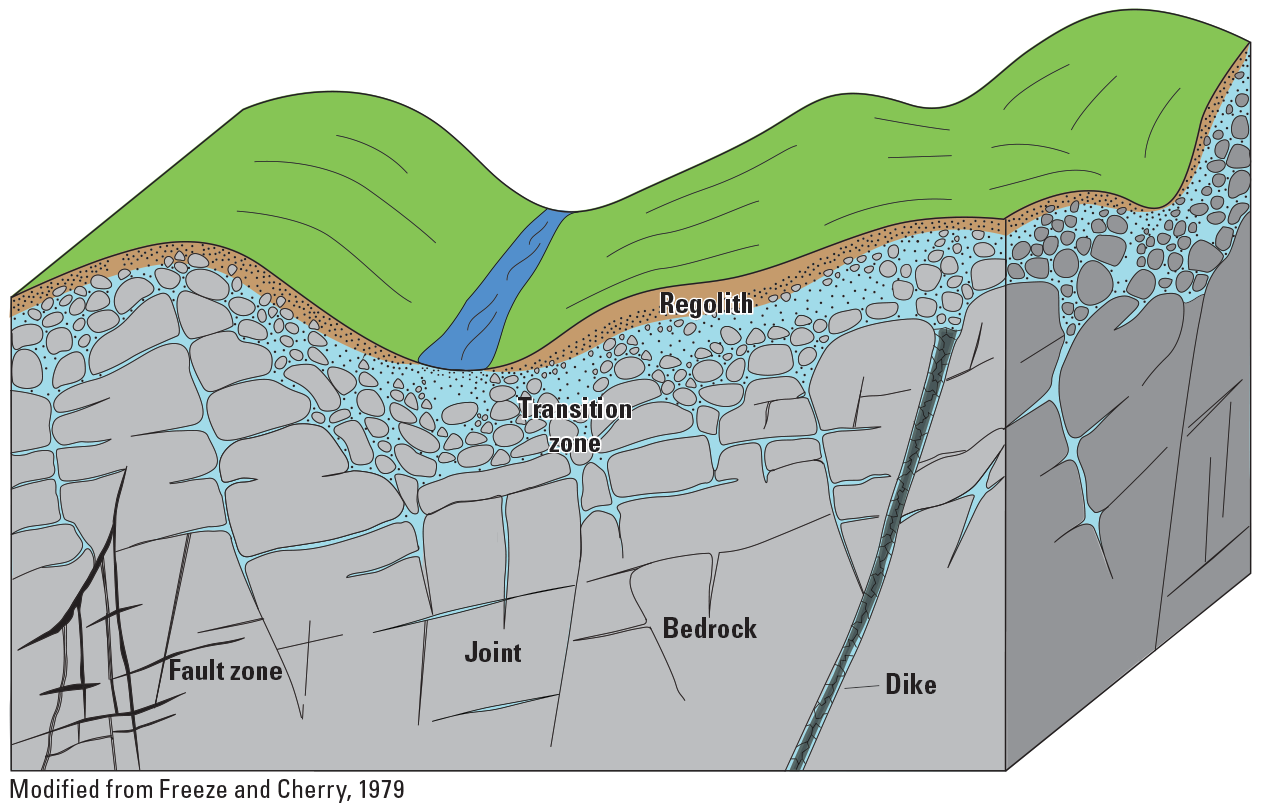A fractured rock aquifer is a type of aquifer that occurs in hard rock formations, such as granite, basalt, or limestone, where water flows through fractures, joints, faults, and other openings in the rock. Unlike unconsolidated aquifers, which consist of loose sediments like sand and gravel, fractured rock aquifers have a different hydrogeological behavior due to the unique characteristics of the rock matrix.
Here are some key features and characteristics of fractured rock aquifers:
- Rock Fractures: Fractures in the rock serve as pathways for groundwater flow and storage. These fractures can be created by tectonic forces, weathering, or other geological processes. They range in size from small cracks to large fissures and can be interconnected, forming a complex network of conduits for groundwater movement.
- Primary and Secondary Porosity: Fractured rock aquifers exhibit primary and secondary porosity. Primary porosity refers to the inherent openings present in the rock matrix, such as fractures and vugs. Secondary porosity develops through processes like dissolution, where water chemically erodes the rock, creating additional interconnected void spaces.
- Heterogeneity and Anisotropy: Fractured rock aquifers are characterized by heterogeneity and anisotropy. Heterogeneity refers to the variability in the size, orientation, and connectivity of fractures within the aquifer, resulting in variations in permeability and hydraulic conductivity. Anisotropy refers to the direction-dependent properties of the aquifer, where groundwater flow may occur more easily along certain fracture orientations.
- Groundwater Flow: Groundwater flow in fractured rock aquifers is influenced by the interconnected fractures and the properties of the rock matrix. Water moves primarily through the fractures, which can have high permeability, while the matrix itself may have lower permeability. The flow patterns can be complex and can vary depending on the orientation, density, and connectivity of the fractures.
- Storage Capacity: Fractured rock aquifers can store significant amounts of groundwater within the fractures and other void spaces. The storage capacity depends on the size, continuity, and connectivity of the fractures, as well as the degree of weathering and dissolution in the rock.
- Challenges in Characterization: Fractured rock aquifers present challenges in characterization due to their heterogeneity and complexity. The identification and characterization of fractures, determination of fracture properties, and estimation of aquifer properties require specialized investigation techniques, such as borehole logging, geophysical surveys, tracer tests, and hydraulic testing.
Fractured rock aquifers are important sources of groundwater in regions where unconsolidated sediments are limited or absent. They can provide significant storage capacity and yield, but their management requires a detailed understanding of the hydrogeological properties and flow dynamics within the fractured rock system. Proper characterization and monitoring are essential for sustainable utilization and protection of groundwater resources in fractured rock aquifers.
